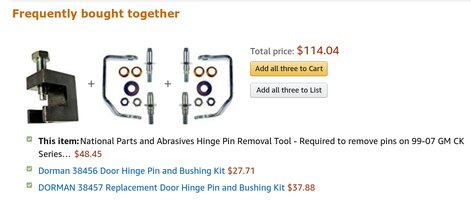When it comes to Metal Fatigue and the possibility of "WHEN will it Fail?" Probably the best example I can think of that might be comparable to and emphasize your situation happened when the inaugural design of
The British de Havilland COMET Passenger Airliner suffered Stress Cracks in the corners of the First (and LAST) 'Square Windows-Viewing Ports'...and at the worst possible times. This created a mystery and raging public fear about Commercial Flying that was eventually solved by one of Great Britain's Smartest Scientific "Boffins" ...but NOT before quite a few of these Airplanes crashed ...and killed a lot of people:

At first, all of the Planes manufactured in 1949 and later had no problems... but the Scientists involved in Post-Mortem Metallurgy determined that from around 1,400 Hours to 1,600 Hours later...the constant Flexing of the Pressurized Fuselage when passing from Sea Level through to 30,000 Feet and back down again... over and over caused the Fuselage Structural Aluminum to bend, flex and work harden enough to eventually form a Catastrophic "Tear". The Metal Skin almost behaved like Explosively Ripping through the Airplanes ...like Shreading Cloth Fabric.
The damage started at the corners of the "Square Windows" and burst open the Planes with their own pressurized atmospheres in the near vacuum created at around 3-5 Miles above the Earth. The solution was to beef up the enclosures around the Windows... and by making them all Smaller...and either Round or Oval to avoid having any "Sharp Corners" to invite Cracking and Metal Fatigue.
Your SUV Door could similarly fail from its present damage being aggravated by Ordinary, Daily Use and from the sheer weight of the Door burdening and swinging wide on the damaged hinges...and possibly become aggravated by excessive vibration when traveling at Highway Speeds.
If the Door Hinge(s) should suddenly Fail and then catch the wind air mass near the upper hinge and let go ... Well... things might get a little hectic and bit too exciting for you or your passengers. If you ponder this problem a bit... you'll eventually land on the right idea of having an Expert cast the scrutinizing gaze of his 'Graduated Eye Balls' over those two Hinge Points and give you much better advice on what your options are for a solid repair.
PS...
If you want to see the Hollywood version of this True Story...
AND Learn MORE about Metal Fatigue, note here that the "Reindeer Tail" empennage design of the suspect plane in the film was NOT a Real Aircraft Design... but a Necessary Evil Mechanical Ploy in the Movie Plot ... So just watch the linked movie
"No Highway in the Sky" with Jimmy Stewart and Marlene Dietrich. As droll as British Aviation Dramas generally go... this 'Sleeper' of a Flick WILL keep you on the Edge of your Seat. ;>)
.
...and there is One More Bit of...Irony in this Story.. Watch what Mr. Honey does with Cracking his Lobster Claw inside the Outer Door Hinge... at around 1:18 into the Film... Now if THAT is not a bit of real Serendipity to your Door Hinge Issue... Then I just Don't Know What IS!







